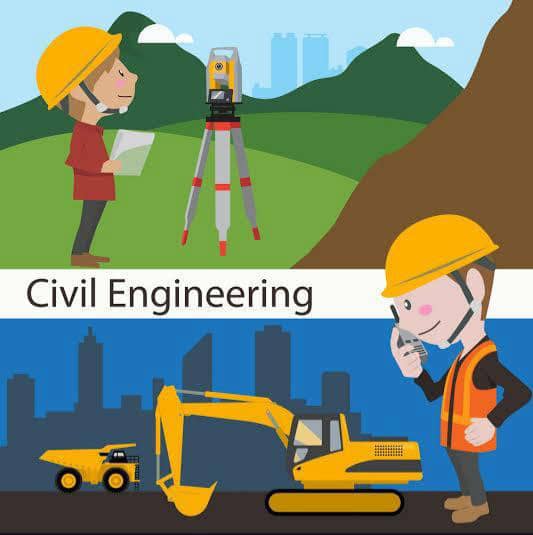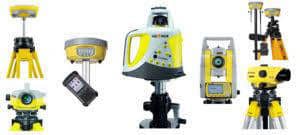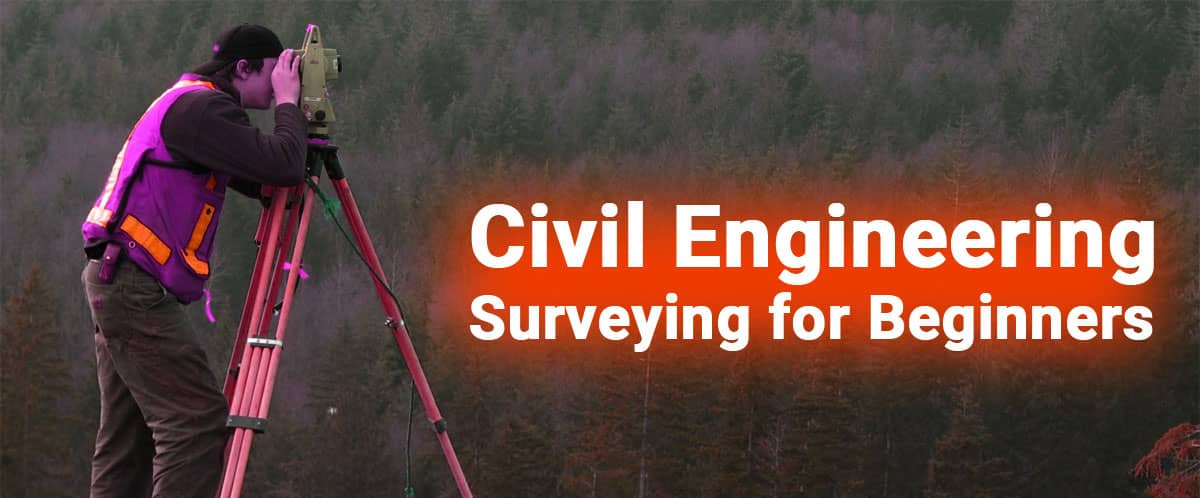Civil Engineering Surveying for Beginners
Every profession must be trained and should have sound practice and in this engineering surveying there is no different. Practice should be based upon proven principles and rules. This article is concerned with examining the principles of survey, things which should be carried by an engineer and punctuality.
Most of the rules below can be applied at all stages of a survey and it is an unwise and unprofessional surveyor who does not take them into consideration with planning, executing, computing and presenting the results of the survey work. The principles defines having application across the whole area of survey activity, from field work to field notes, things to carry with, hydrography to cartography, and cadastral to construction surveying.

Each Civil engineering surveyor should carry:
- Reprints and pamphlets.
- Direction of a Line. Recommended.
- Levelling and Earthwork.
- Field Note Book, Like Sample.
- Lead Pencil, Faber, No. 5, red Hexagon.
- Eraser, typewriter, small.
- Cross ruled paper, for platting.
- For each party
- Wire spikes, 6'\ 12
- Wire lath nails, 3d fine.
- Boy's axe, sharp.
- Marking crayon.

An engineer should be able to:
- Measure distance.
- Measure an angle.
- Keep notes.
- Run a traverse.
- Run a straight line.
- Take levels.
- Make computations.
- Make maps and drawings.
- Write a report.
- Take care of instruments.
- Use a needle compass, some.
- Lay out a curve.
- Oversee equipment.
- A survey consists of
- The field work.
- The field notes.
- The calculations.
- The permanent record.
Expect for what each of these items implies is completed in a thorough and professional manner, the survey will be not perfect, and usually be less adequate. Such surveys normally prove to be both unsatisfactory and expensive.
The Field Work has many kinds of operations and labour:
- Running lines, straight or curved, and marking their location with stakes, or other wise
- Measuring distances, with tape, or other device
- Finding the direction of a line.
- Placing, and constructing, monuments, such as landmarks and station marks.
- Getting differences of elevation, or running levels, as it is called.
- Making bench marks for the levels.
- Digging for old landmarks.
- Sounding.
- Making borings for showing materials.
- Gauging of streams.
- Building stations for triangulation.
- Making astronomical observations.
This list is not exhaustive, only illustrative.
The Field Notes are made in the field. They are a plain, orderly, neat, and complete, record of the field work, and attendant conditions, circumstances, and facts, made according to the directions below:
- Mark name and number of party neatly and plainly, at top right hand side of first outside cover of note-book.
- Number leaves of note-book, if not numbered.
- Select a brief and comprehensive title.
- Enter the date on every page of notes, and at beginning of notes of each day's work.
- Note instruments used, and any special tools, or apparatus, on each leaf of note book.
- Record the place where work is done.
- Write a description of the object of the work, if not apparent from the title or the notes themselves.
- At the bottom of each page of notes place the signature of the recorder,?also at the end of the record of each day's work.
- When the note-book is filled, enter a title on the outside of the front cover, with the dates of beginning and end the records therein.
- Make, and enter, an index in the book, if needed.

